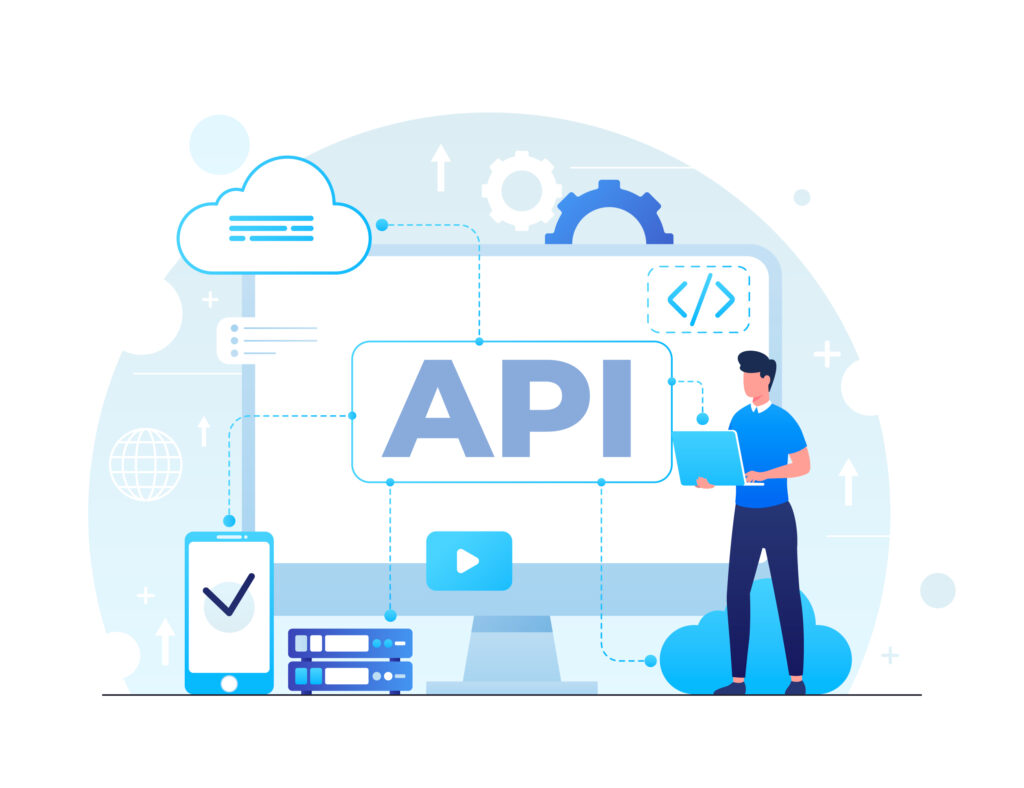APIs (Application Programming Interfaces) power modern applications by enabling seamless communication between different software systems. From banking apps to social media platforms, APIs facilitate data exchange, making them indispensable—but also a prime target for cybercriminals.

A single API vulnerability can lead to massive data breaches, financial losses, and irreversible reputational damage. High-profile API breaches, such as those affecting Facebook, Twitter, and T-Mobile, demonstrate how critical it is to implement robust security measures.
This guide provides a deep, actionable approach to securing your API against hackers. We’ll cover authentication best practices, encryption methods, rate limiting, security testing, and more. By the end, you’ll have a comprehensive strategy to lock down your API and prevent unauthorized access.
API Security Risks: Common Threats & Attack Vectors
APIs are vulnerable to multiple attack methods, each exploiting different weaknesses. Before implementing security measures, you must understand the threats you’re defending against.
1.1 Injection Attacks (SQLi, NoSQLi, Command Injection)
Injection attacks occur when hackers insert malicious code into API requests, tricking the server into executing unintended commands.
- SQL Injection (SQLi): Attackers inject malicious SQL queries to manipulate databases, extract sensitive data, or delete records.
- NoSQL Injection: Similar to SQLi, but targets NoSQL databases like MongoDB. Attackers exploit insecure query structures.
- Command Injection: Hackers inject system commands (e.g.,
rm -rf /) to execute arbitrary code on the server.
Prevention:
- Use parameterized queries (prepared statements) instead of raw SQL.
- Apply input validation to reject suspicious payloads.
- Implement least privilege access—database users should only have necessary permissions.
Broken Authentication & Session Hijacking
Weak authentication mechanisms allow attackers to impersonate legitimate users. Common exploits include:
- Credential Stuffing: Hackers use leaked passwords from other breaches to gain access.
- Session Fixation: Attackers hijack active sessions by stealing session tokens.
- Brute Force Attacks: Automated tools guess passwords until they succeed.
Prevention:
- Enforce Multi-Factor Authentication (MFA).
- Use OAuth 2.0 or OpenID Connect for secure token management.
- Implement short-lived session tokens with forced re-authentication.
1.3 Excessive Data Exposure
Many APIs unintentionally leak sensitive data by returning more information than necessary.
Example:
A banking API might return:
json
Copy
Download
{
"user": {
"id": 123,
"name": "John Doe",
"email": "john@example.com",
"ssn": "123-45-6789",
"balance": "$10,000"
}
}
Instead, it should only return:
json
Copy
Download
{
"user": {
"id": 123,
"name": "John Doe"
}
}
Prevention:
- Apply data filtering—only return necessary fields.
- Use GraphQL query validation to prevent over-fetching.
- Mask sensitive data in logs (e.g.,
****-****-6789).
1.4 DDoS & Rate Limiting Bypass
APIs without proper rate limits can be overwhelmed by excessive requests, leading to Denial-of-Service (DoS) attacks.
Prevention:
- Implement request throttling (e.g., 100 requests/minute per IP).
- Use CAPTCHA for suspicious traffic.
- Deploy Web Application Firewalls (WAFs) to block malicious traffic.
1.5 Security Misconfigurations
Default settings, outdated software, and exposed debug endpoints create easy entry points for hackers.
Common Misconfigurations:
- Default admin passwords (e.g.,
admin:admin). - Unrestricted CORS policies allowing unauthorized domains.
- Verbose error messages exposing system details.
Prevention:
- Disable unnecessary HTTP methods (e.g., DELETE, PUT).
- Remove debugging endpoints in production.
- Regularly audit server configurations.
2. Authentication & Authorization: Locking Down API Access
2.1 Strong Password Policies & Multi-Factor Authentication (MFA)
Weak passwords are the easiest way for hackers to breach APIs.
Best Practices:
- Enforce 12+ character passwords with mixed cases, numbers, and symbols.
- Integrate MFA (SMS, TOTP, or biometrics).
- Block password reuse (check against breached password databases).
2.2 OAuth 2.0 & OpenID Connect
OAuth 2.0 is the industry standard for secure API authentication.
How It Works:
- User logs in via an Identity Provider (IdP) (e.g., Google, Auth0).
- The API receives a short-lived access token.
- The token is validated before granting access.
Best Practices:
- Use PKCE (Proof Key for Code Exchange) to prevent token interception.
- Store tokens securely—never in localStorage (use HTTP-only cookies).
- Implement token expiration (e.g., 1-hour lifespan).
2.3 Role-Based Access Control (RBAC)
Not all users should have the same permissions.
Example Roles:
- Admin: Full access (create, read, update, delete).
- Editor: Can edit but not delete.
- Viewer: Read-only access.
Implementation:
- Define roles in JWT claims or database records.
- Validate permissions server-side (never trust client-side checks).
3. Data Encryption & Secure Communication
3.1 TLS/SSL Encryption (HTTPS Everywhere)
Unencrypted APIs expose data to man-in-the-middle (MITM) attacks.
Best Practices:
- Enforce HTTPS-only connections (disable HTTP).
- Use TLS 1.3 (disable older versions like TLS 1.0/1.1).
- Regularly renew SSL certificates (avoid self-signed certs).
3.2 Input Validation & Sanitization
Never trust user-submitted data.
Prevention Techniques:
- Allowlists (Whitelisting): Only accept known-safe inputs.
- Data Type Checks: Ensure numbers are numbers, emails match regex patterns, etc.
- Sanitize SQL/NoSQL Queries: Use ORM libraries (e.g., Sequelize, Mongoose).
4. Rate Limiting & Throttling
4.1 Why Rate Limiting Matters
Without limits, attackers can:
- Brute-force passwords (thousands of login attempts per second).
- Scrape data (overloading servers).
- Launch DDoS attacks (crashing services).
4.2 Implementation Strategies
- IP-Based Throttling: Limit requests per IP (e.g., 100/minute).
- User-Based Limits: Restrict authenticated users (e.g., 500/hour).
- Dynamic Rate Adjusting: Increase limits for trusted users, decrease for suspicious ones.
5. API Security Testing & Monitoring
5.1 Penetration Testing
Simulate real-world attacks to find vulnerabilities.
Tools:
- Burp Suite (automated scanning).
- OWASP ZAP (open-source alternative).
- Postman (manual API testing).
5.2 Logging & Real-Time Alerts
Track all API activity to detect breaches early.
What to Log:
- Failed login attempts.
- Unusual request patterns (e.g., sudden spikes from one IP).
- Unauthorized access attempts.
Alerting Tools:
- Splunk (log analysis).
- Datadog (real-time monitoring).
- AWS CloudWatch (for AWS-based APIs).
6. Secure API Documentation Practices
6.1 Avoid Exposing Sensitive Details
Public API docs should never include:
- Internal endpoints.
- Hardcoded API keys.
- Deprecated versions.
Secure Documentation Tools:
- SwaggerHub (access-controlled docs).
- Postman Private Workspaces (share securely with teams).
FAQ: Common API Security Questions
Q1: How often should I update API security measures?
- At least quarterly, or after major infrastructure changes.
Q2: Can a firewall alone protect my API?
- No. Firewalls help, but you need encryption, authentication, and monitoring for full security.
Q3: What’s the biggest API security mistake?
- Using default credentials (e.g.,
admin:admin) or misconfigured permissions.
Conclusion: Building an Unbreakable API Security Strategy
Securing your API is not a one-time task—it requires continuous monitoring, testing, and updates. Follow these best practices:
✅ Enforce strong authentication (OAuth 2.0, MFA).
✅ Encrypt all data (TLS 1.3, input validation).
✅ Implement rate limiting to prevent abuse.
✅ Monitor logs for suspicious activity.
✅ Regularly audit security configurations.

